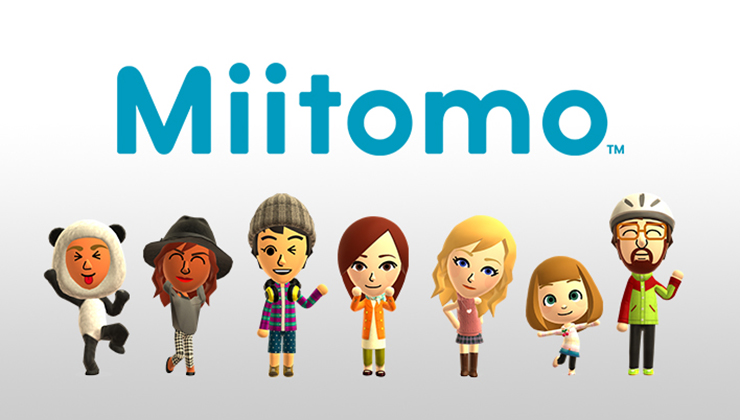The market for portable consoles has been shrinking, a trend developers should understand and consider before undertaking their next project.
Portable consoles have been a consistent element of the gaming industry for over 25 years. While getting in on the console business and also keeping costs lower than a full home console game might sound appealing, the market has been diminishing and will probably continue to do so. There are potentially better platforms for smaller titles and we’ll detail what they are and why they’re more viable.
Game boy: portable progenitor
While portable electronic game systems existed as early as the ’70s (the Milton Bradley MicroVision was the very first handheld game console to use interchangeable cartridges) it wasn’t until Nintendo’s Game Boy that the market codified into something we would recognize today. Designed by Gunpei Yokoi, who helped create Nintendo’s successful Game & Watch series of LCD game/wristwatch combos, and packaged with Tetris, the system was almost an immediate hit. While graphical capabilities were inferior to the Atari Lynx and the Sega Game Gear (both of those system were capable of displaying in color, while the Game Boy was monochrome) the cheaper cost and consistent software support meant that the system in its various forms (including the smaller Game Boy Pocket and the upgraded Game Boy Color) would sell over 100 million hardware units.
Since that time, Nintendo’s portable gaming unit has been its most consistent source of profits. Game Boy’s successor, the Game Boy Advance, launched in 2001 and sold over 80 million hardware units in roughly six years, shoring up Nintendo’s financials while sales of the GameCube languished behind the PS2 and Xbox. Sony launched the most significant competitor to Nintendo in the portable console space in the PSP, which eventually went to sell over 75 million units, though Nintendo countered with the Nintendo DS. Combining a touch screen with dual screen set up, the DS proved to be Nintendo’s most popular portable system ever, eventually selling over 150 million hardware units.
While Nintendo and Sony were fighting for dominance in the portable console space, mobile phone games languished in limbo. Hard to program for, underpowered for gaming, and typically featuring buttons that were poorly configured for controlling games, gaming on mobile phone was a small market in the mid 2000s. Nokia saw an opportunity to bridge the gap between portable consoles and mobile phones, launching the N-Gage in 2003. Awkward to use as a phone and suboptimal for video gaming, the N-Gage was considered a sales failure by Nokia and abandoned as a hardware initiative in two years – having a viable phone that could also play games seemed very far away.
iphone changes everything
Smartphones had in the early 2000s were of the BlackBerry variety – designed for surfing the web and writing emails, they were designed to appeal to professionals, politicians, reporters and anyone else that needed computer functions on the go. The biggest sea change for the smart phone was the launch of the iPhone in 2007. The user friendly touchscreen changed how people thought of how to interface with phones (and, eventually, computers).
The shift for gaming happened with the launch of the iPhone App Store one year later in 2008. Released alongside the iPhone 3G, the App Store proved to be an extremely popular feature, seeing over 10 million paid and unpaid app downloads in just a few days after launch. With an easy way for users to access new software and standardized hardware for developers to work with, there finally was an easier way for game developers to put things out on a phone.
This is notable because of the portable consoles that launched after the rise of smartphones (both iPhones and Google’s Android). There were two mindsets in the gaming industry at the time: one that smart devices (also including tablet computers) would subsume all dedicated portable game devices, the other that portable consoles would remain because they were much better for the purposes of playing games. While the truth is rarely cut and dry, there are definite trends.
Smartphones have risen up from being a niche device to now being owned by 68 percent of U.S. adults; tablet computers have similarly risen from being a non-existent category before 2010 to now being owned by 45 percent of households, according to Pew Research. Worldwide, there are over a billion active iOS devices according to Apple 1.4 billion active Android devices according to Google. During roughly the same time period, portable game console ownership decreased from 18 percent of U.S. adults to 14 percent, with sales by the Nintendo 3DS put at below 60 million and Sony’s PlayStation Vita at about 10 million, significantly bellow the over 200 million in hardware sales achieved for the previous portable console generation.
why the shift
The advantages of portable consoles are as stated above: they have better controls dedicated to games than a smartphone or tablet device. While raw graphical power also used to be an advantage, smartphone technology is upgraded every year, while portable consoles only alter significantly every five or more years.
This is a story that is only partially about the hardware. It also involves price – its easy to download cheap ($.99) or free games on a smartphone or tablet device, where there are multitudes of potential titles. By contrast, most games on portable consoles are premium priced, with a floor of around $5 and going all the way up to $40 – that’s a lot to ask per game, especially in titles targeted for kids who don’t have a regular source of income.
So in addition to price-per-game, there are other things factoring into the value equation. Smartphones and tablet computers can simply do more: they’re easier to access the web with, do online shopping, watch steaming video from any number of sources along with utility in doing anything like composing an email, reading a book and (for adults) doing taxes. While modern portable consoles have more functionality outside of games, they still pale in comparison with what most standard smartphones and tablets can do these days.
The most pervasive feature, however, of smartphones and tablet computers (though perhaps especially smartphones) is that people have them on them at almost all times. Smartphones are increasingly becoming an element baked into modern life so that people can communicate with each other and retrieve information at a moment’s notice. Portable consoles are nice luxuries for playing games on the go, but it’s another thing people have to carry with them. Convenience often wins out over other factors, and smartphones have that in spades.
welcome our smartphone overlords
Developers may have spent their youths playing portable game consoles – nostalgia is an understandable thing. However, when considering where development resources can be put, portable game consoles look like a shrinking market. The top grossing games on iOS generate hundreds of thousands (if not millions) of U.S. dollars in revenue everyday and the list of comparably successful games on the 3DS is smaller and almost all are from Nintendo or Capcom.

While Nintendo has benefited the most from portable consoles over the years. even they are bringing Fire Emblem and Animal Crossing to mobile devices in some capacity, marking a significant sea change. For their part, Sony has all but bowed out of the market, saying that a PS Vita 2 is unlikely at this point.
“People have mobile phones, smart phones, and it’s so easy to just play . . . games for free,” said Sony’s Shuhei Yoshida. “The climate is not healthy for now, because of the huge dominance of mobile games.”
So with Sony edging away from portable consoles and Nintendo’s future in the area uncertain (much is still unknown about the impending NX), developers would be smart to consider other options as well. That may be smartphones, tablets or even an indie game for Steam . . . but probably not on a portable console.





















